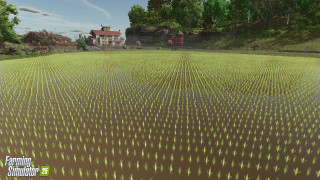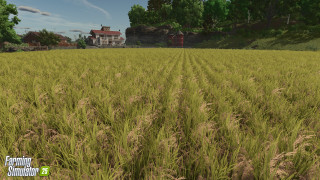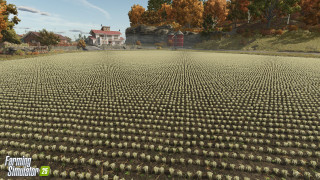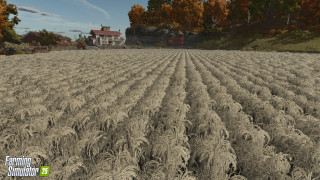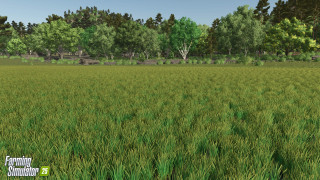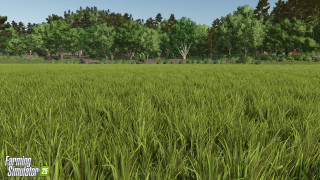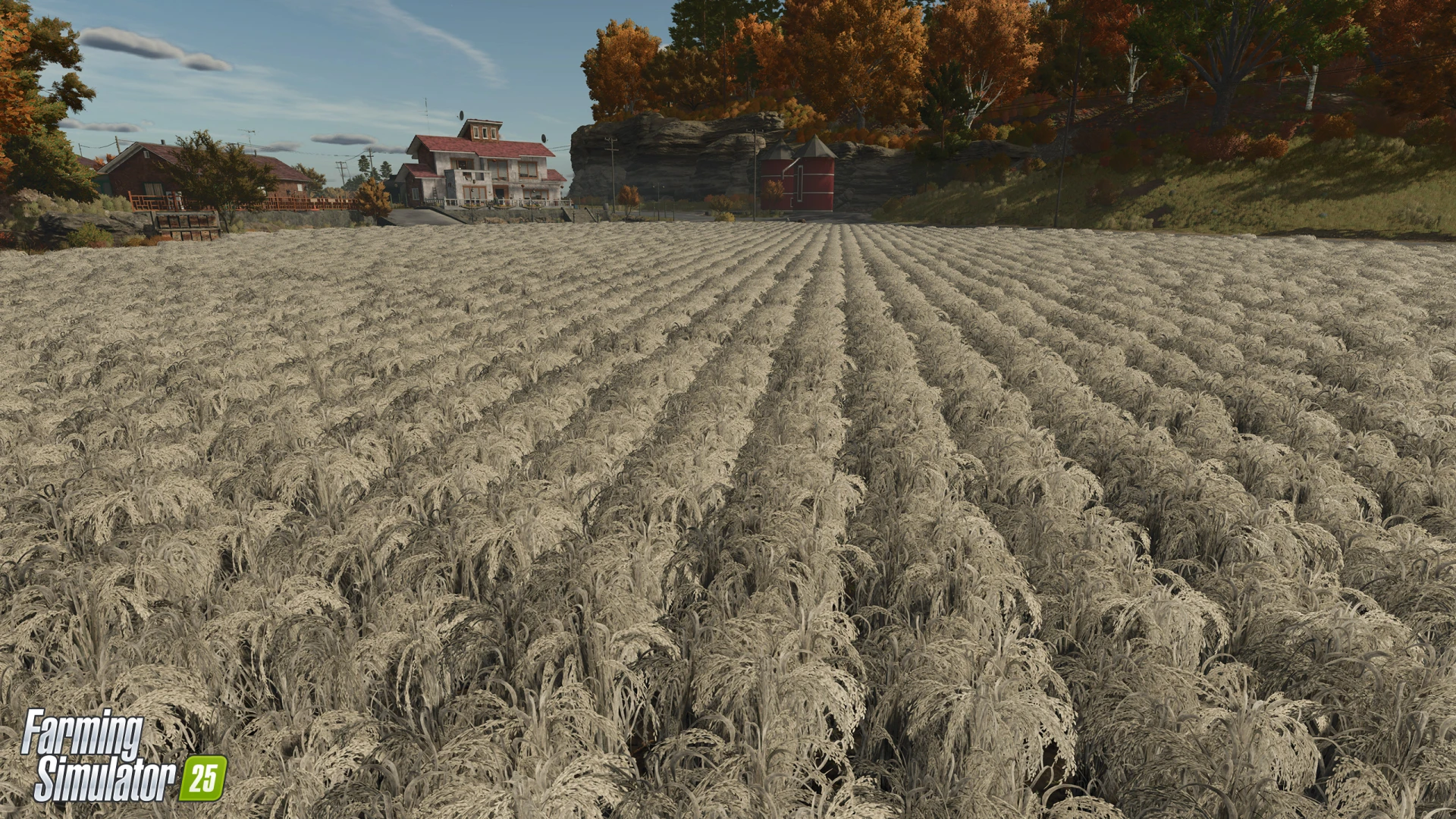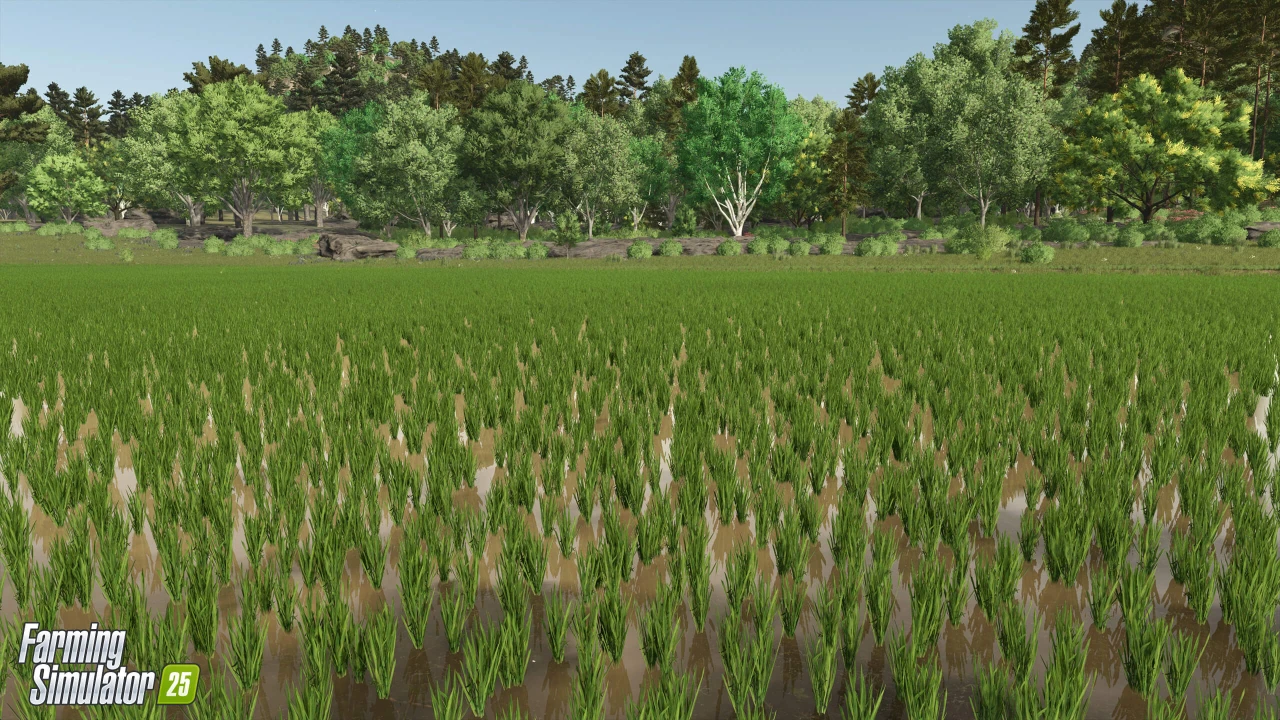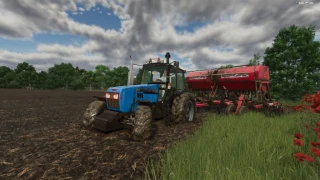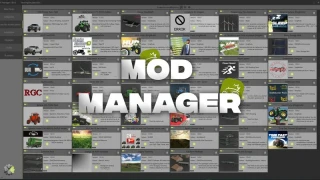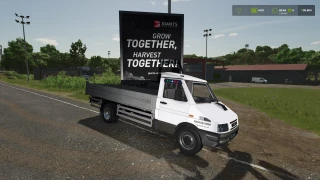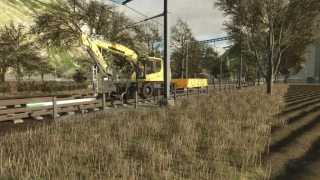Hello everyone! If you're reading this news, you're probably eager to learn about the new features in the game, including gameplay mechanics, new machinery, maps, and other content. It's worth noting that with the release of Farming Simulator 25, we're in for many exciting innovations, one of the most significant being the introduction of rice as a new crop.
For players who have long been waiting for the chance to cultivate rice paddies, this update will be a real breakthrough. In this article, we will break down all the details related to growing rice, the features of new fields and equipment, as well as the nuances to consider when working with this crop. Recently, the developers shared some intriguing new details about this agricultural crop with the gaming community. So let's dive in and see what we should expect.
Two Types of Rice: Regular and Long-Grain
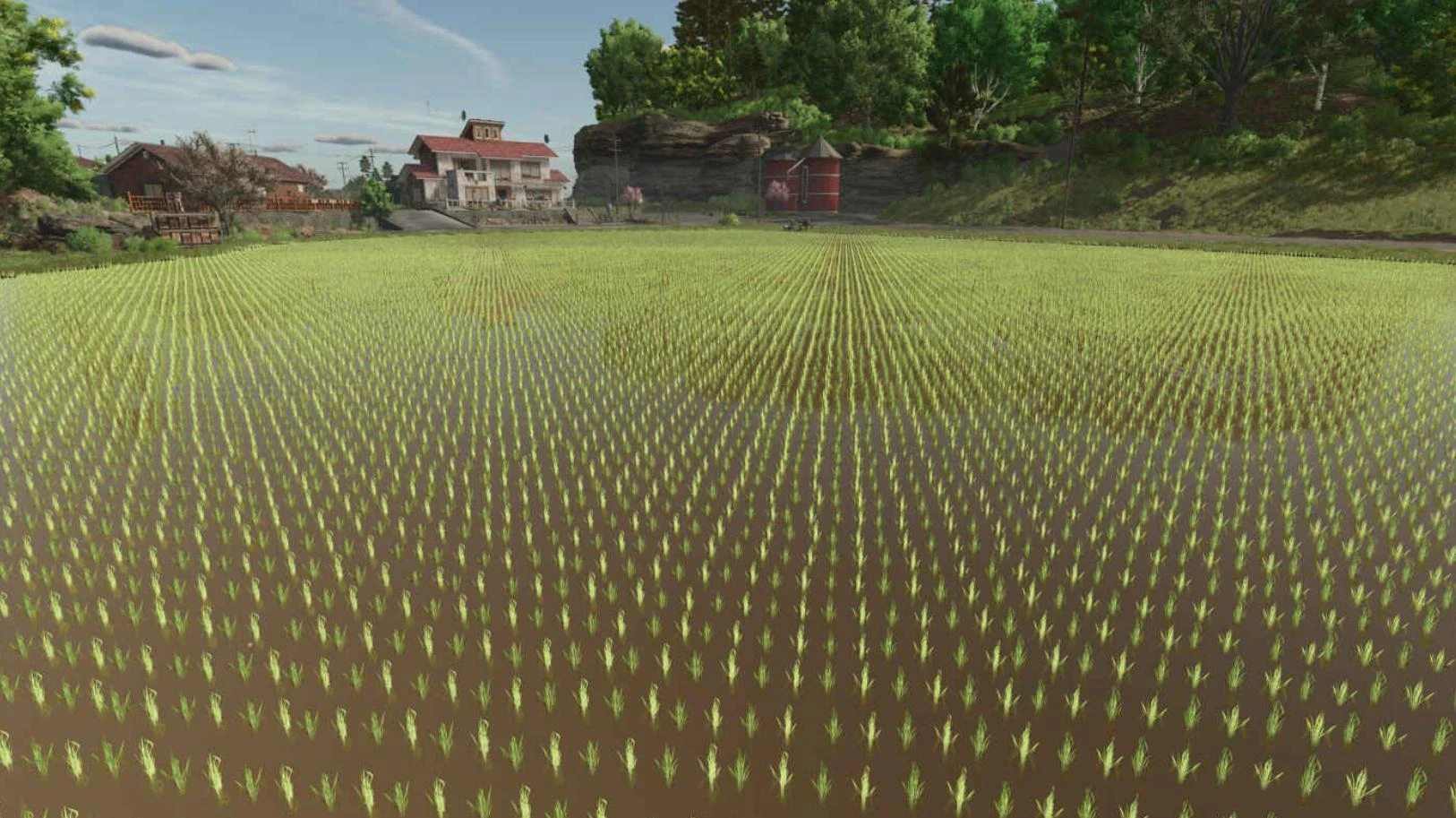
The first thing to discuss is the presence of two types of rice in the game. The developers of Farming Simulator 25 have decided to delight us with two varieties of rice, each with its own characteristics. First, there's the familiar regular rice, and second, long-grain rice. These types differ not only in appearance but also in their characteristics, from planting methods to yield.
For example, regular rice requires seedlings for planting, while long-grain rice is planted using a standard grain seeder. Moreover, each type of rice has its unique specifics when it comes to cultivation. For instance, you can't plant regular rice using a standard tractor and seeder. You'll need a special rice transplanter, which we previously mentioned in earlier articles — the ISEKI PRJ8D. The same applies to harvesting: each type of rice has its own dedicated harvesting equipment and care techniques.
The Specifics of Rice Fields
Rice, being a water-loving crop, requires special growing conditions. An important feature is that it needs specially irrigated fields for cultivation.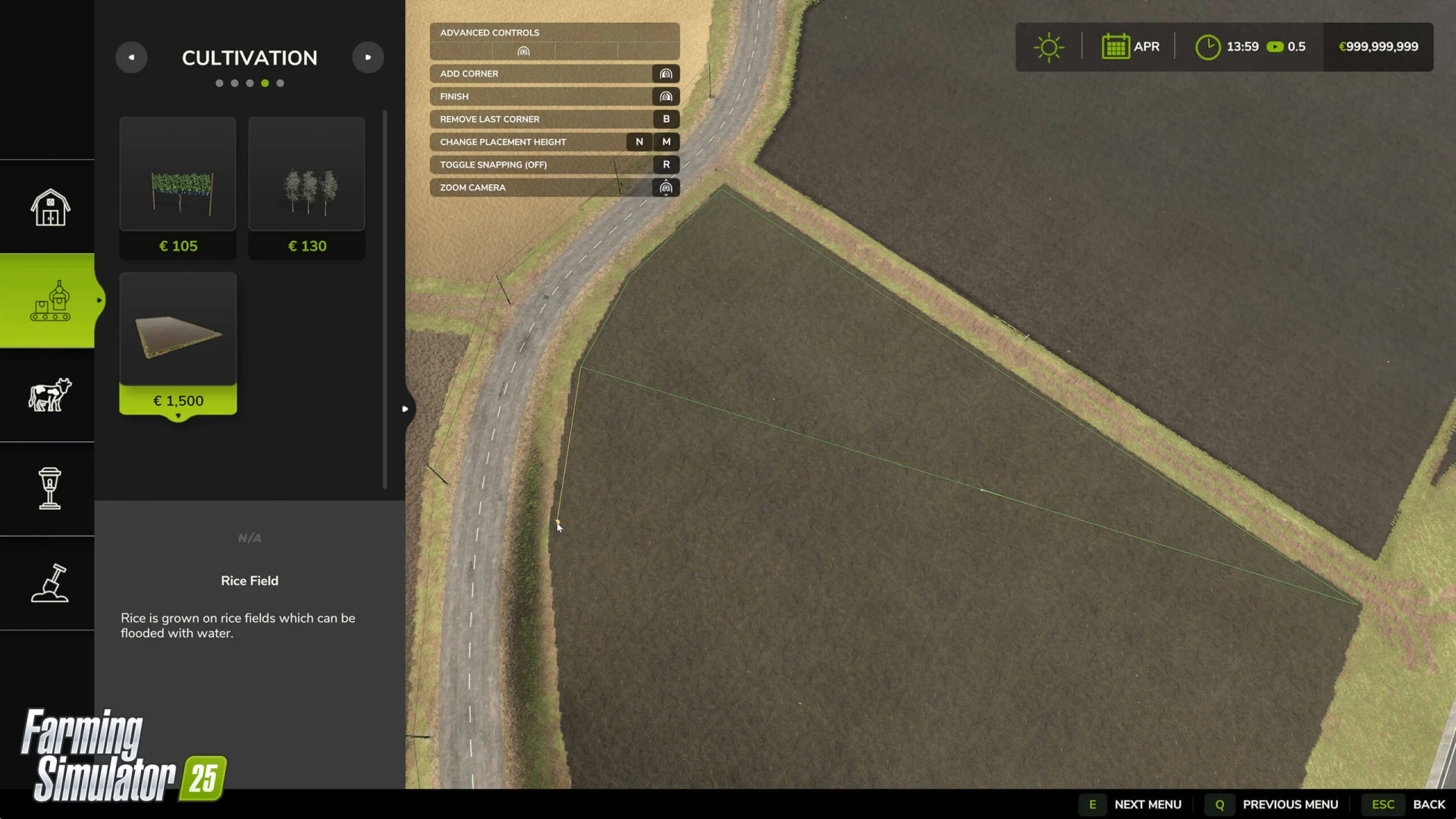
Creating such fields is available through the construction menu, which has been updated in FS25. As with vineyards and olive groves, players will need to establish plantations using new tools. You can check out these tools in the screenshots below.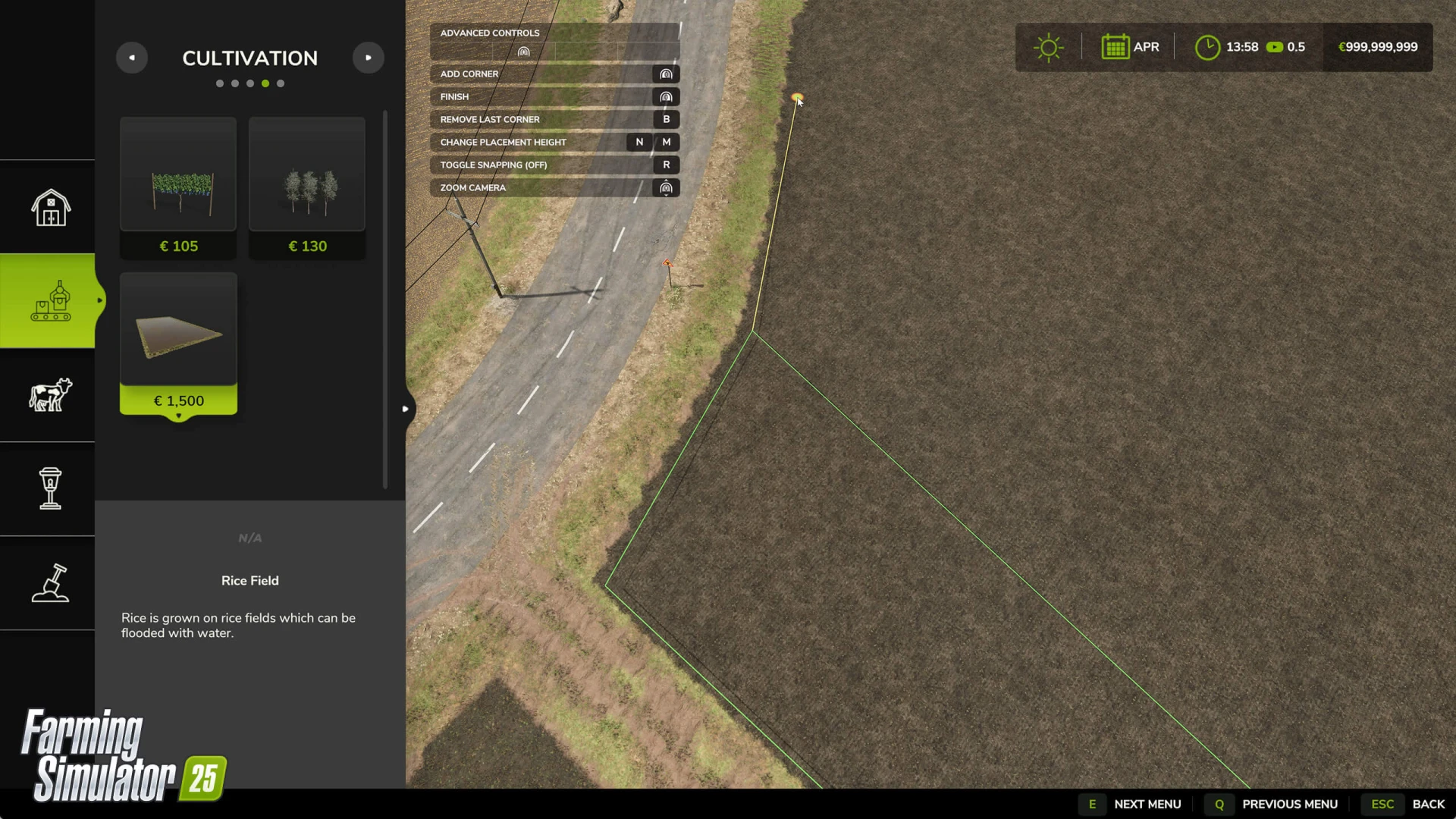
Building a rice field isn't just about leveling a piece of land. While the field must be flat, its shape can be anything from a classic rectangle to more complex polygonal configurations. This allows players to adapt fields to any terrain on the map.
Creating a rice field is a mandatory step for rice cultivation, as the crop requires high moisture levels. To retain enough water in the soil, the fields need ditches to make the soil denser and less absorbent.
Once the field construction is complete, lime is automatically applied to the field, eliminating the need for a separate liming operation. However, it's important to note that this procedure only happens once—during the initial construction of the field.
Planting and Caring for Regular Rice

Regular rice is planted from April to May using seedlings, which can either be purchased from the store or grown in greenhouses. However, it is recommended to grow them yourself. Yes, it will undoubtedly take more time, but in this case, you will earn more profit than if you bought the seedlings from the store.
Planting regular water rice is done using a special rice transplanter, which we discussed earlier. It's important that the field is flooded before planting; otherwise, without enough water, your rice will simply wither.
Growing Regular Rice Seedlings in Greenhouses
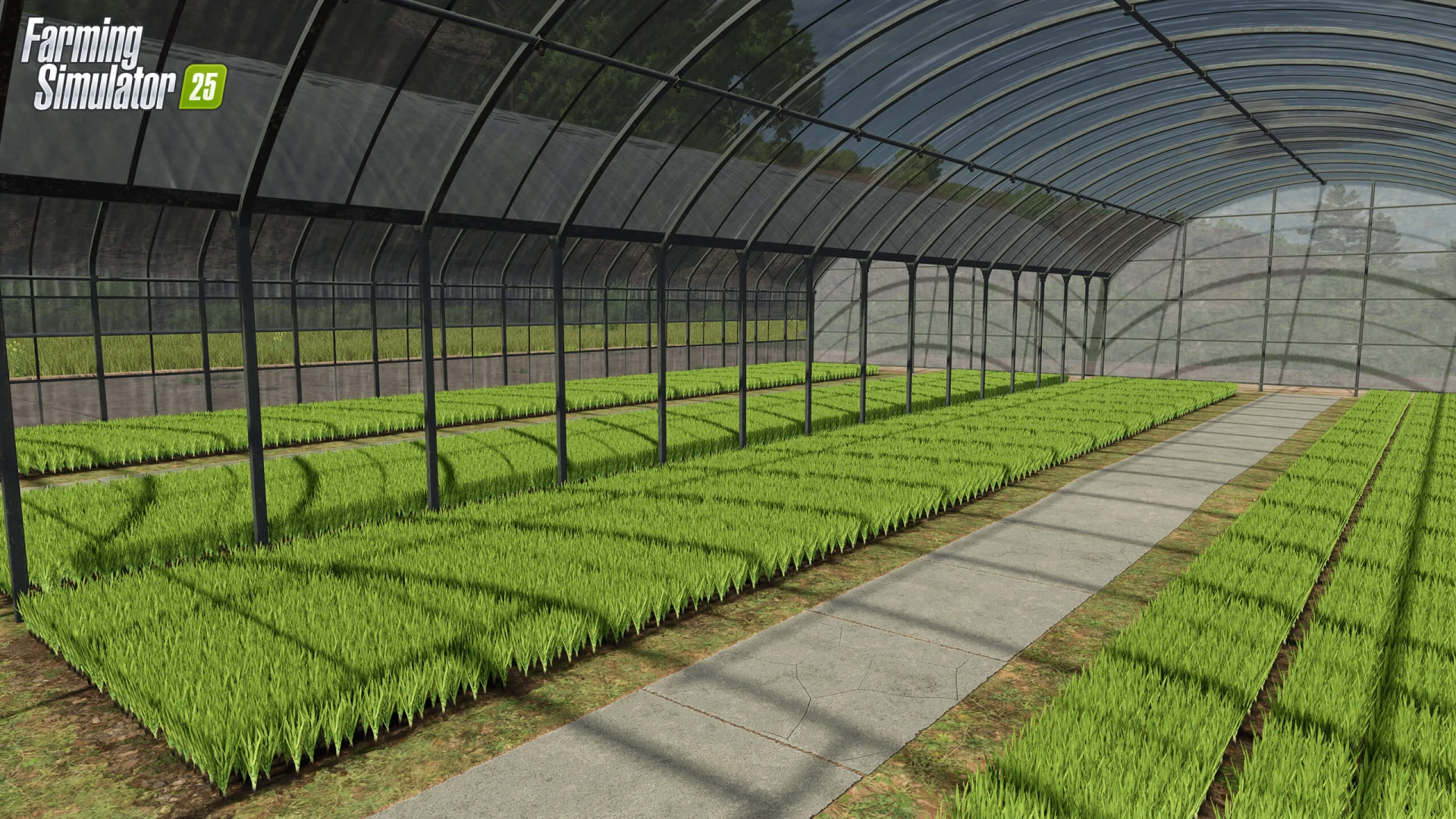
Of course, you can easily purchase seedlings of this crop in the FS25 store and save yourself the hassle. But the developers have also created special mechanics that allow you to grow rice seedlings on your own.
This is done in greenhouses, where the seedlings are cultivated. Don’t worry, it’s not as complicated as it might seem at first. Plus, the process is very engaging, and for those who enjoy gardening, botany, and similar activities, this will be quite enjoyable.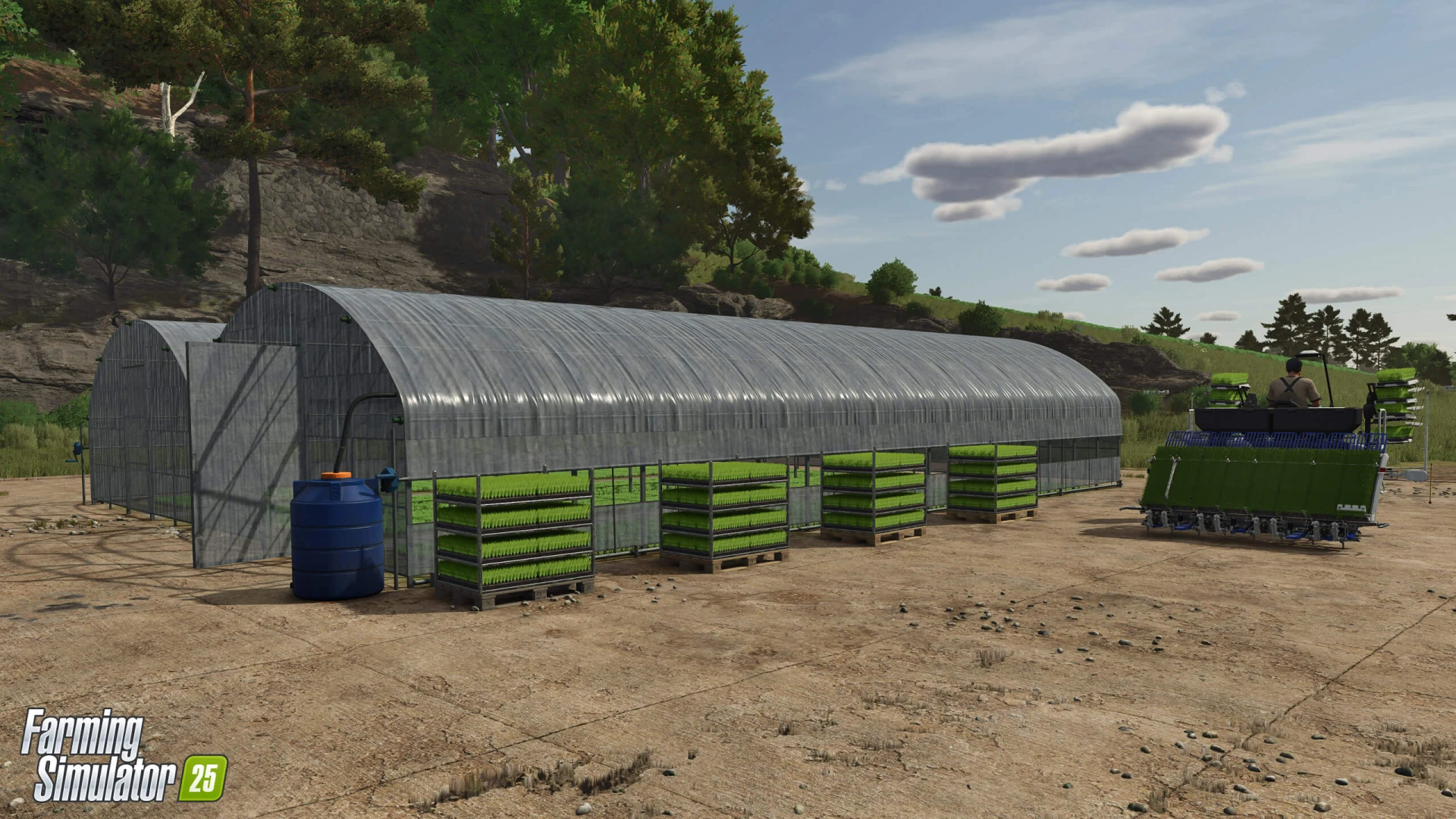
What will this give you in the end? Growing your own seedlings can significantly reduce costs since store-bought seedlings are more expensive. This can greatly increase the final profit from selling rice. So, if you're aiming for maximum profit, growing your own seedlings is the right choice!
Yield of Regular Rice in FS25
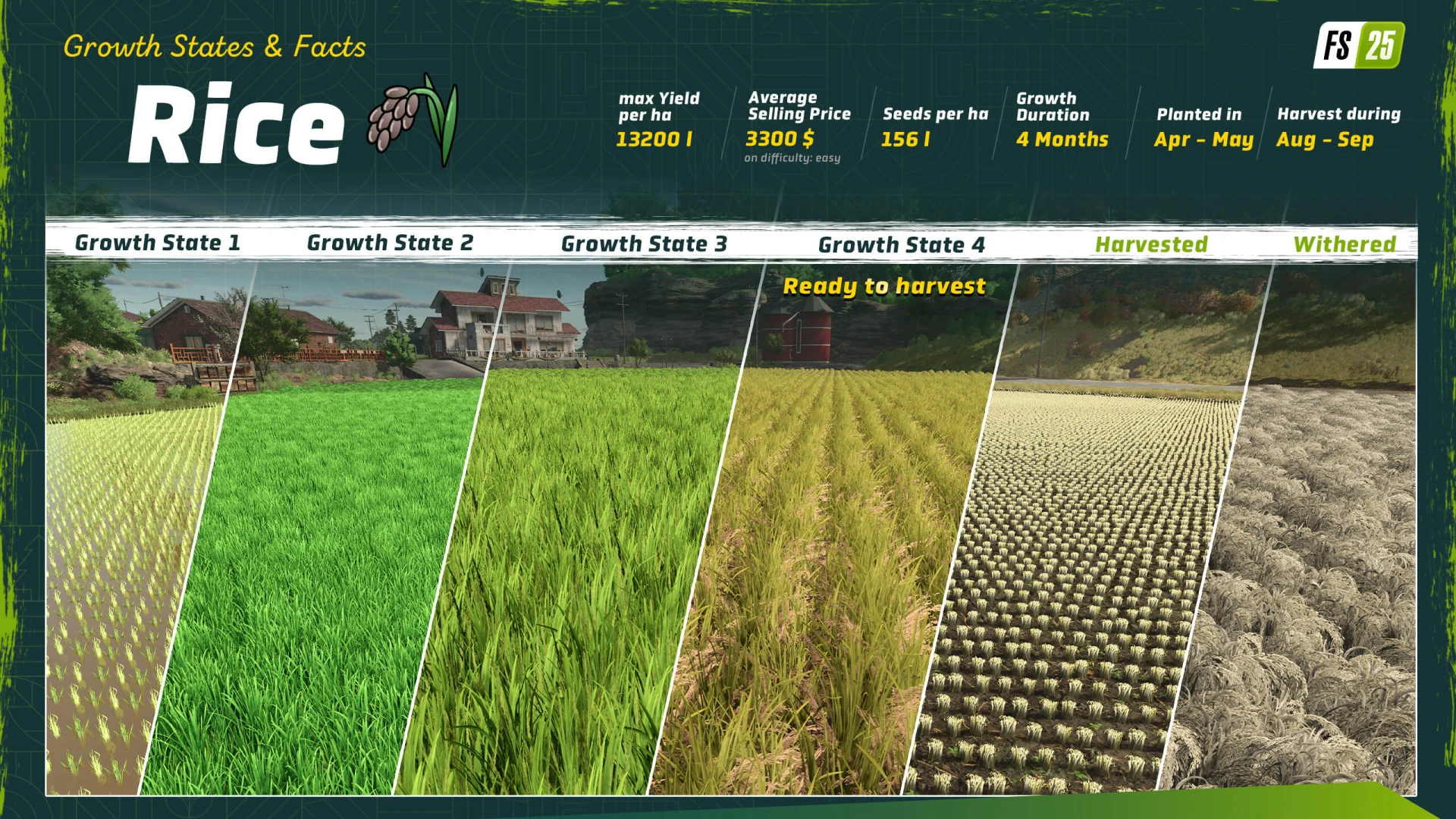
The average yield is about 13,200 liters per hectare, with a selling price of $3,300 per 1,000 liters.
Agree, these are very attractive numbers. Given the high selling price, this crop can become one of the most profitable in the game. The only drawback is that regular rice requires a lot of attention.
However, if you use it for further processing, which increases the final product's value even more, any drawbacks can be considered insignificant!
Long-Grain Rice: Cultivation Features

Long-grain rice, unlike regular rice, is planted using a standard grain seeder, meaning regular equipment is sufficient for its planting.
The sowing campaign takes place in April, with harvesting in September. The yield of this type of rice is higher than that of regular rice, reaching 18,000 liters per hectare. However, its price is noticeably lower—only $1,890 per 1,000 liters. But long-grain rice is much easier to grow, as it requires far less care.
Its maturation time is also a bit longer. While regular rice takes 4 months, long-grain rice requires 5 months for full growth.
The main advantage of long-grain rice is the simplicity of harvesting. A regular grain harvester with a classic header will suffice. This significantly simplifies the harvesting process and reduces the need for specialized equipment.
The Importance of Maintaining Water Levels in Fields
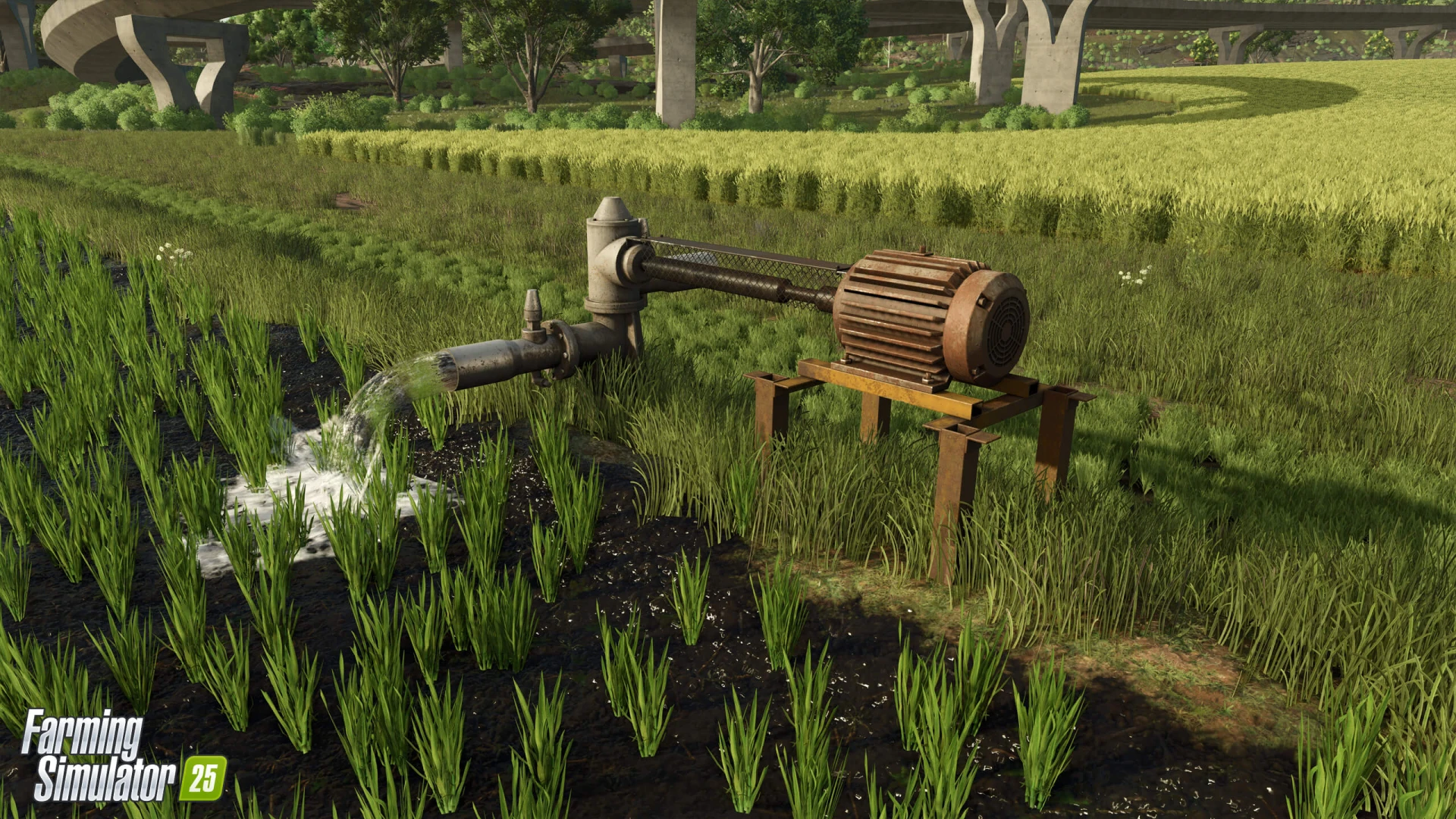
A key aspect of rice cultivation is maintaining the necessary water level in the field. After planting rice, the field should be flooded with water. Regular rice requires flooding before planting.
However, long-grain rice is different: there’s no need to flood the field before sowing, as it is planted with regular seeds. Nevertheless, during its growth, the plant still needs plenty of moisture, so irrigation and humidity control are essential.
The game offers the option of automatic water level control via a pump, but it’s important to regularly check the field's condition to prevent yield loss.
Harvesting Features of Both Rice Types
Harvesting long-grain rice is straightforward: any grain-harvesting equipment will suffice.
However, to harvest regular rice from a flooded field, you will need a special harvester. This is the rice harvester from Iseki, model HJ6130.
With it, you can easily gather the entire crop. It’s worth noting that this harvester doesn’t have a wide working width, but that’s not necessary, as rice grows densely and is typically planted in relatively large fields.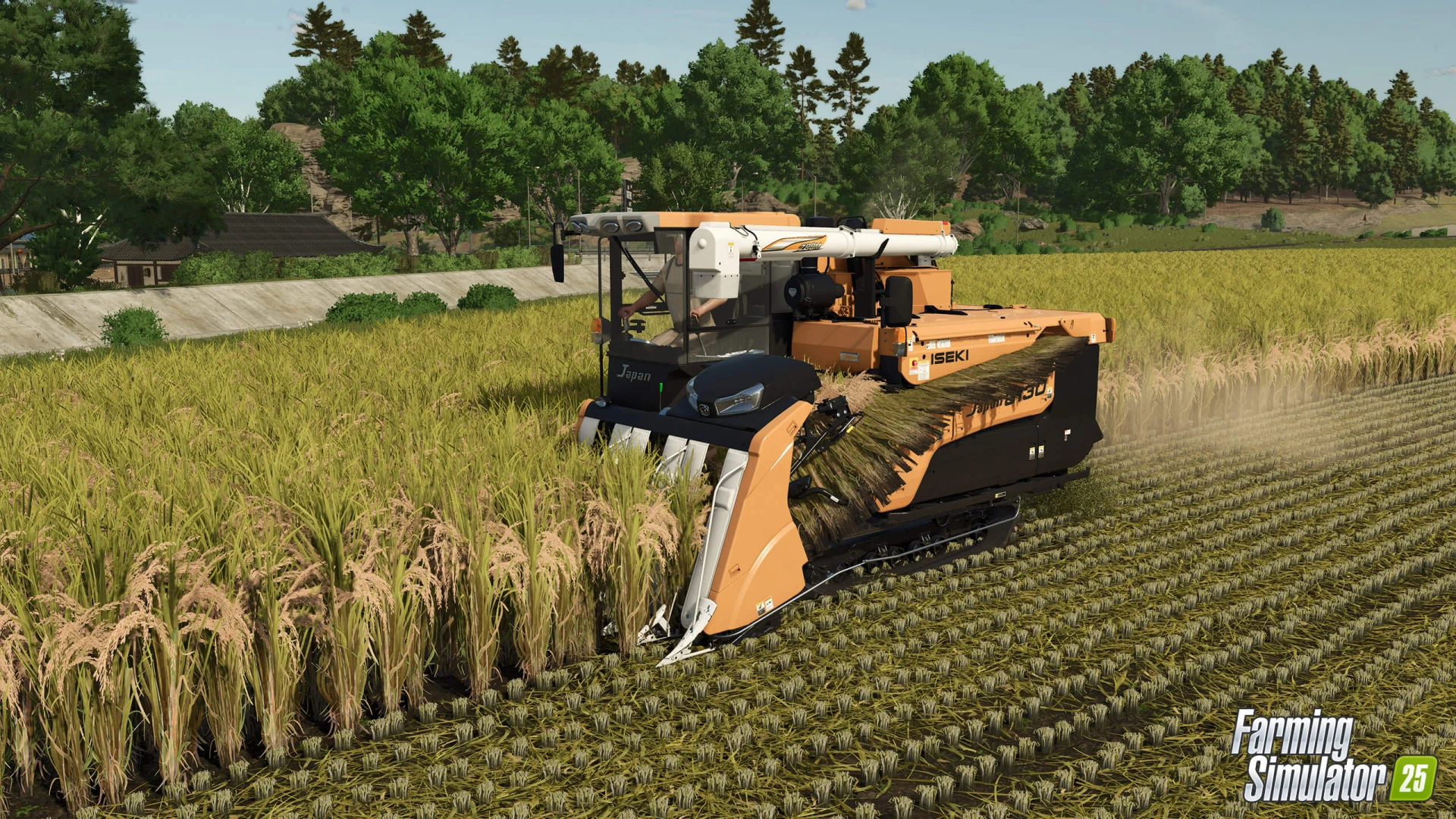
Of course, you can also use other equipment by adding it to the game via mods.
After harvesting, don’t forget to lime the field. Treating the field this way is essential for achieving maximum yields. While it's not mandatory to lime the field immediately after the first harvest, you can do it after a few seasons once you've successfully collected several crops. However, the importance of this task cannot be understated.
Rice Growth Stages
At the end of the article, let’s look at the growth stages of both types of rice. This will help you better understand when to plant rice and when to harvest it. If you wait too long to harvest, the rice might wither, and you’ll lose all your money.
It's worth noting that both types of this crop go through six growth stages. However, they do look slightly different from one another. To help you understand when to harvest and when it's already too late, let's examine the stages for each type separately.
Growth Stages of Regular Rice
Rice grows quite quickly—much faster compared to other crops in the game. As time passes, the plant undergoes noticeable visual changes. These serve as indicators, helping you to harvest the rice at the right moment.
Stage 1: Beginning of Growth
At this stage, the crop is just starting to break through the soil. This means you planted it correctly and on time, and it will continue to grow successfully.
Stage 2: Active Growth
As seen in the screenshot below, at this stage, the rice sprouts turn green and keep growing actively. The plant becomes so thick that the flooded water is no longer visible.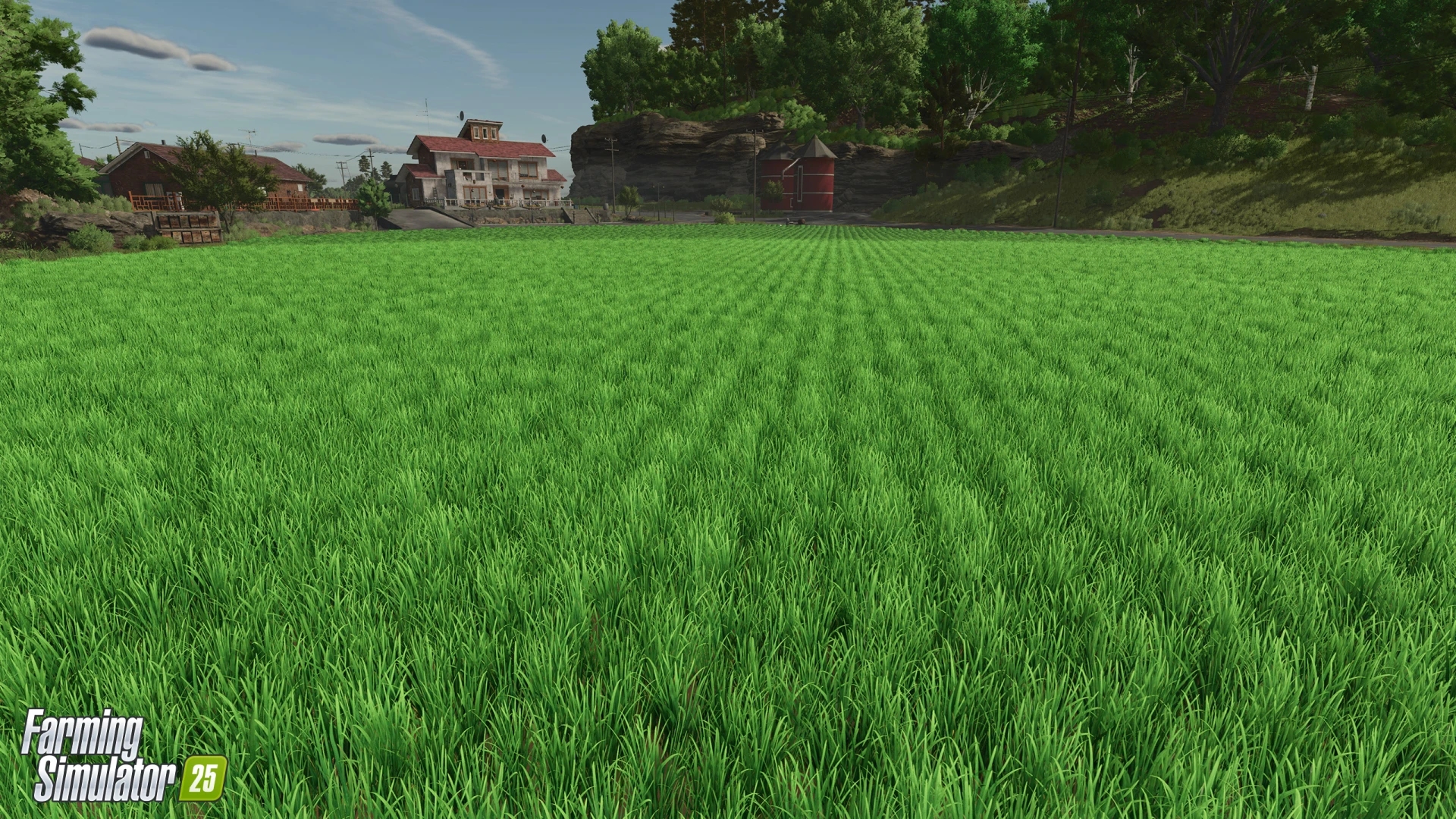
Stage 3: Ripening
After the second stage, the rice begins to ripen. This is the second-to-last stage. Look at the screenshot below. The leaves lose some of their green color and continue to grow taller. This means the time for harvesting is near. It’s essential to get the necessary equipment ready for this moment.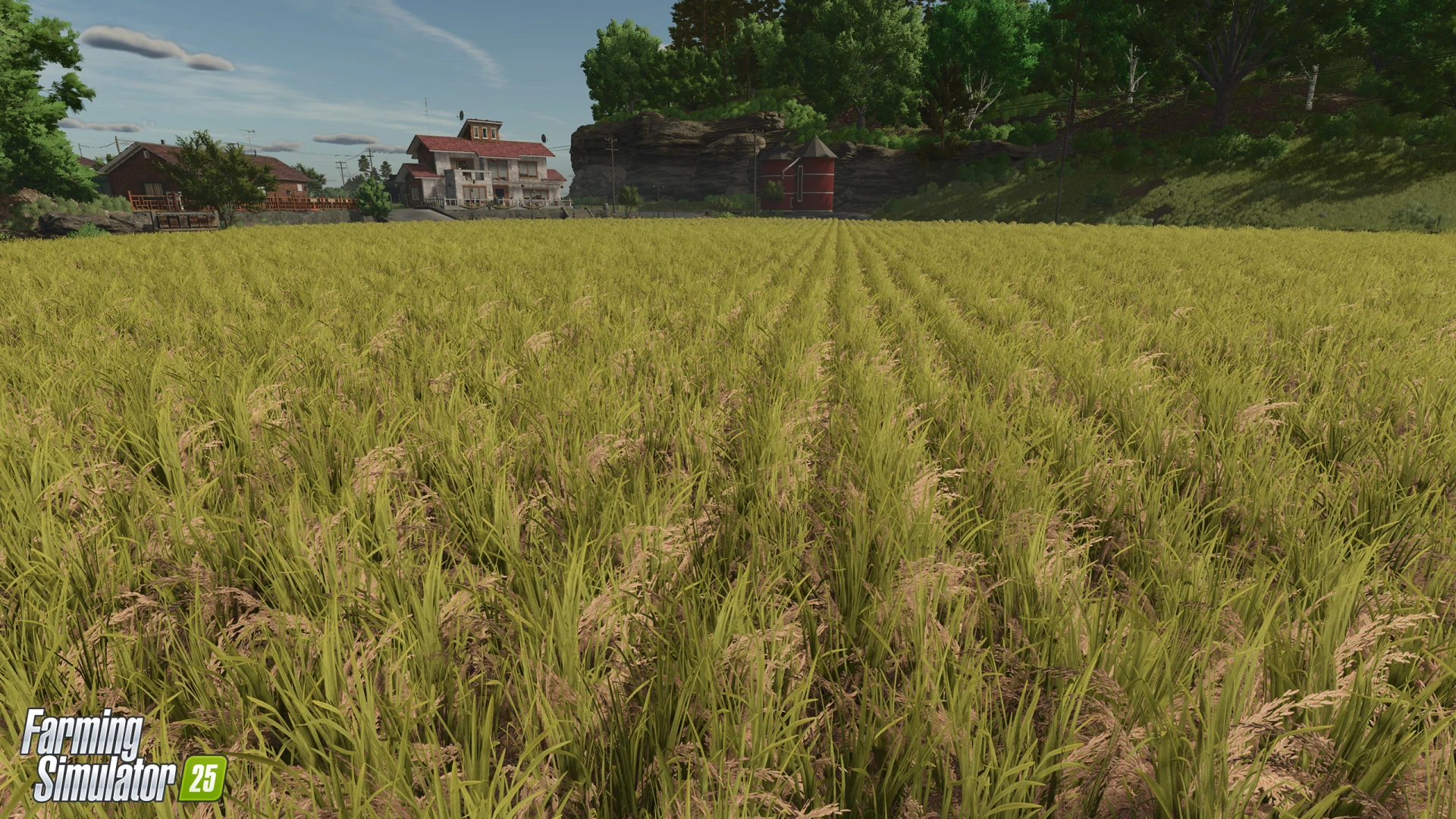
Stage 4: Harvest Time
Congratulations! If your rice looks like the screenshot, you’ve successfully grown it, and it’s time to start harvesting using a special harvester (the name of which can be found earlier in this article). It’s crucial to cut the rice on time because if you don’t, the next stage will follow, and the rice will wither and be lost.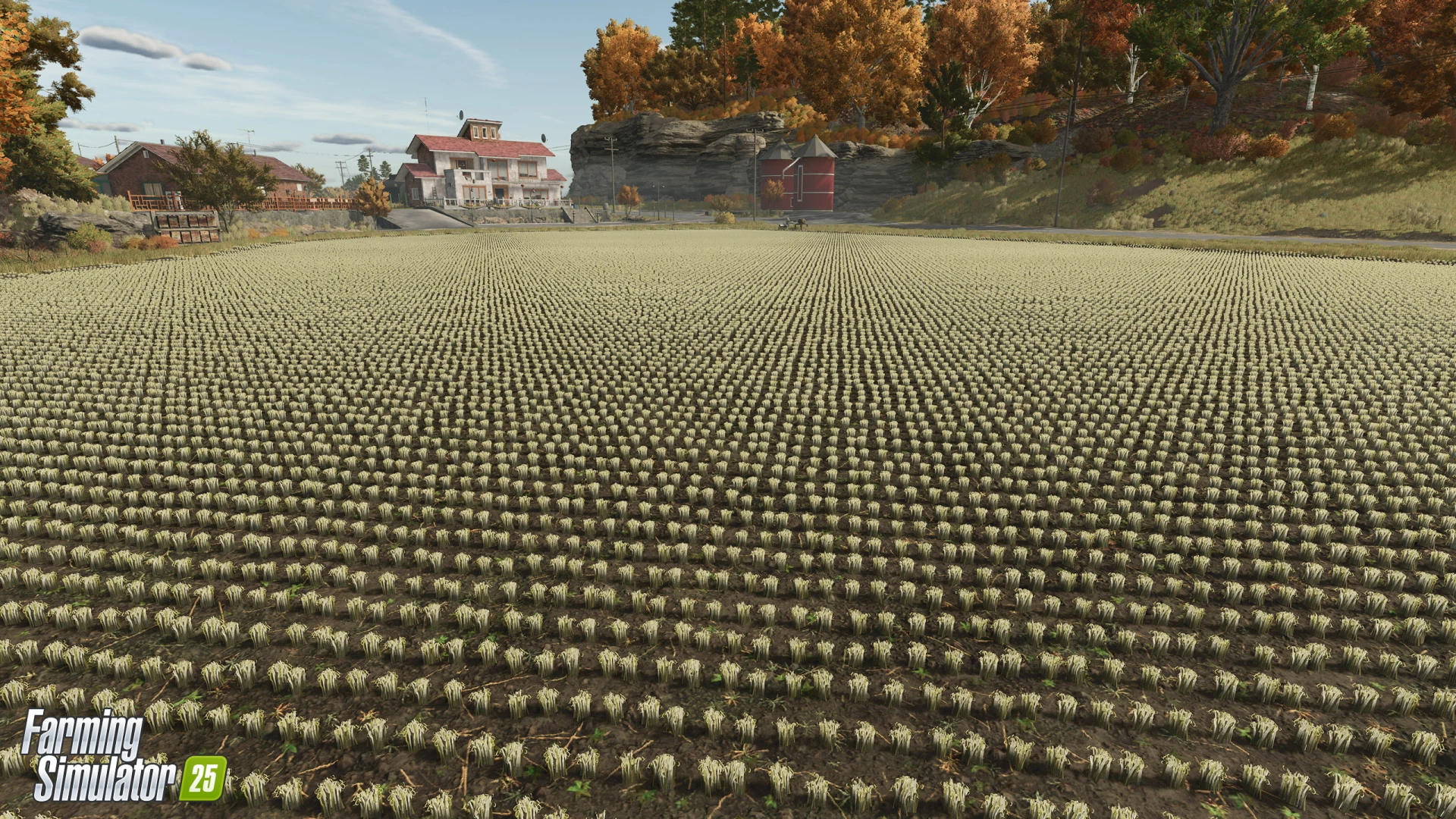
Stage 5: Rice Successfully Harvested
You’ve successfully harvested all the rice. Only small stumps remain on the field because the mower cannot cut the plant down to the root.
Stage 6: Plant Withered
Unfortunately, if your field looks like this, you didn’t harvest in time, and all the rice has been lost. The only option left is to cut everything and replant the field. To avoid crop loss, always harvest on time and treat the fields with fertilizers and special substances to protect the plants from environmental factors.
Long-Grain Rice Growth Stages
This type of rice also has six growth stages. The first four stages cover growth and ripening. By the fourth stage, you can begin harvesting the crop from the field.
We won’t go into detail about each stage since they are the same as those described above for regular rice. The only differences are visual.
Rice: A Very Promising Crop in Farming Simulator 25
Once the rice is harvested, it can either be sold directly or used in production chains.
The developers haven’t yet provided detailed information about which production facilities will be available in FS25 for processing rice. However, they’ve hinted at some possibilities. This effort to maintain intrigue suggests that something exciting and possibly grand awaits us. So, we’ll have to wait for the game’s release or new updates from Giants Software on this matter. It is expected that rice will be used in new production processes, possibly related to processing and creating various products.
Thank you all for your attention! Feel free to comment on what you think about the new crops the developers are adding to the upcoming Farming Simulator 25.
-md_fs25planet.jpg)

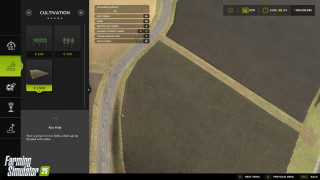
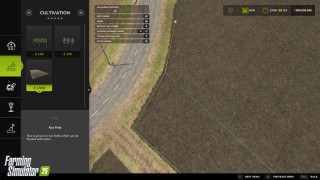
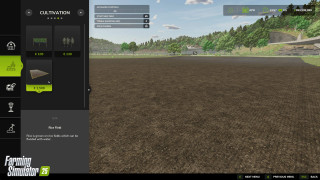
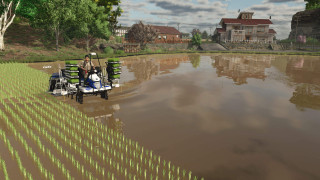
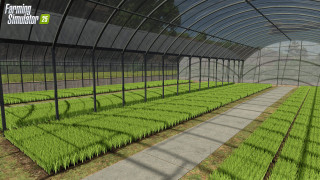
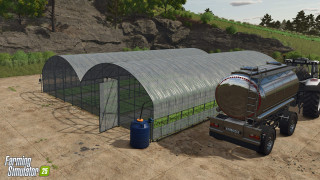
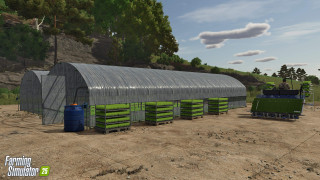

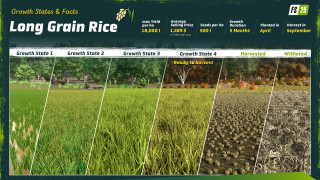
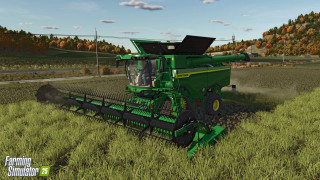
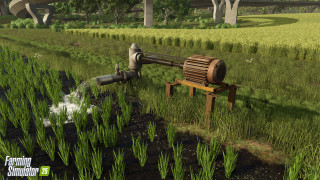
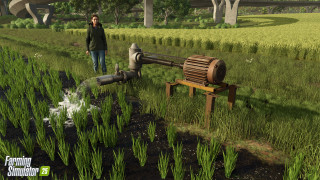
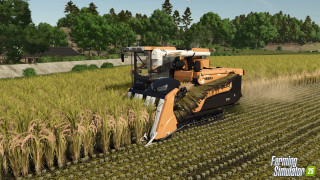
_fs25planet.jpg)
